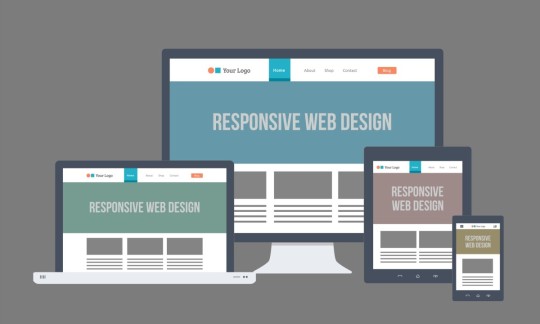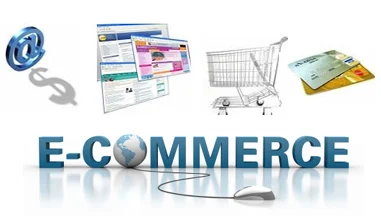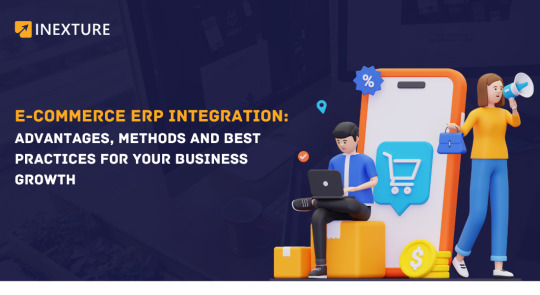#EcommerceOptimization
Explore tagged Tumblr posts
Text

🔑 Unlock the Benefits with PCFitment 🔑
Experience the power of PCFitment and enjoy the following advantages:
✅ Reduced Returns ✅ Increased Sales ✅ Time Savings ✅ Enhanced Reputation
Start today and watch your business grow with smarter solutions! 🚀
🌐 Visit us at www.pcfitment.com 📧 Contact us at [email protected]
#pcfitment#reducedreturns#increasedsales#timesavings#enhancedreputation#businessgrowth#unlockbenefits#smarterbusiness#ecommerceoptimization
1 note
·
View note
Text
Unlock the Secret to Smarter Online Sales with Predictive Analytics in Ecommerce
In the ever-competitive ecommerce world, staying ahead means knowing what your customers want, before they even ask. That’s the power of predictive analytics in ecommerce.
This blog breaks down how top brands are using predictive models to: 🔍 Understand buying behavior and personalize experiences 📦 Optimize inventory and manage supply chains 📊 Forecast trends and boost customer retention
Whether you’re a digital retailer, ecommerce strategist, or product head, this read offers practical insights to turn data into profits and browsers into buyers.
#PredictiveAnalyticsInEcommerce#EcommerceGrowth#DataDrivenRetail#CustomerInsights#SmartCommerce#SalesForecasting#BusinessIntelligence#KodyTechnolab#RetailAnalytics#EcommerceOptimization#AIInEcommerce#DigitalRetailStrategy#DataScienceInEcommerce#TechForRetail
0 notes
Text

Want to make your Shopify store load faster and boost user experience? 🚀 Lazy loading is the secret weapon you need! This smart technique delays image and asset loading until they’re actually needed—saving bandwidth and improving page speed. 📈 Discover how to implement it effectively and supercharge your store’s performance.
0 notes
Text
Elevate Your eCommerce Game: Maximizing Sales with Catalog Management Services
Investing in catalog management services is a game-changer for eCommerce businesses. By optimizing your product catalogs and implementing best practices, you can enhance product visibility, improve customer experience, and increase sales. Partner with EnFuse Solutions India to elevate your eCommerce game and maximize your success in the online marketplace.
#eCommerceOptimization#eCommerceServices#ProductContentOptimization#EnhancedProductListings#eCommerceGrowthStrategies#eCommerceSuccessTips#CatalogManagement#DigitalCatalogServices#ProductCatalogOptimization#CatalogDataEnrichment#EnFuseSolutions#EnFuseSolutionsIndia
0 notes
Text
Shopify Speed Optimization Tips
Struggling with slow 𝗦𝗵𝗼𝗽𝗶𝗳𝘆 𝘀𝘁𝗼𝗿𝗲 𝘀𝗽𝗲𝗲𝗱?
Every second of delay could be costing you 𝙨𝙖𝙡𝙚𝙨!
𝗙𝗮𝘀𝘁 𝗦𝗵𝗼𝗽𝗶𝗳𝘆 𝘀𝘁𝗼𝗿𝗲 = 𝗠𝗼𝗿𝗲 𝗦𝗮𝗹𝗲𝘀
𝟰𝟬% of shoppers leave if a site takes 𝟯+ seconds to load.
1-sec speed boost = 𝟱.𝟲% more conversions!
Learn practical tips & tools to optimize your Shopify speed in 2025! Read here: https://www.webuters.com/shopify-speed-optimization
👉 Need expert help? Talk to our Shopify experts today - https://www.webuters.com/contact-us
0 notes
Text
Expert eCommerce Audit Services by Brad Advertising
We provide multi-dimensional eCommerce audits for upsurging brands seeking a detailed and comprehensive approach to the eCommerce technology stack, revamped user experience, and marketing channels. We strive to help you uncover major branding obstacles and meet aspired eCommerce growth targets, and therefore our audit and technology consulting solutions are entirely bespoke.
Our eCommerce audit services hinge on a circumspective mode of assessment in which we review every pivotal façade of your eCommerce operation. These key aspects effectively cover a supportive technology stack, a suitable eCommerce platform, lucrative third-party setup, strategy for buyer acquisition, frontend UX, progressive marketing impact, unique channel performance, data analytics, monitoring, reporting, and more
Whether a full-fledged audit project or a feature-bound evaluation, our immensely customizable brand audits can expediently serve the specific requirements of your business. All-in-all, we segregate your eCommerce operations in a functional hierarchy to dispense equal attention on each essential part. Our flexible audit and consulting solutions include the following
Technology stack – eCommerce platform & frameworks, third-party configuration, backend systems, integrations, etc Customer experience – Frontend UX, merchandising functions, email-based communication, content, mobile usability, CRM, performance, checkout, payments, post-purchase CX, etc. Analytics – Tag management, data, attribution models, etc. Customer acquisition – Global optimization, cutting-edge web marketing technologies, the influence of individual channels, marketing budget evaluation, etc. All-inclusive eCommerce – Accessibility, SEO, site performance, simple checkout, payments, etc. eCommerce teams – Team skills, processes, training, and development
Our audits are built around the concept of actionable insights that can successfully lay the foundation of an efficient eCommerce performance roadmap. Our recommendation plan focuses on data-driven marketing practices that prompt you towards well-informed decisions for your upcoming retail venture.
How We Work
We dwell upon an emphatic commencement that begins from the initial discovery of your brands’ objectives, targets, common marketing hazards, and potential solutions. Obtain authenticated access to the server, eCommerce platform, analytics portals, & other systems considered under the review.
We precisely consume 4-6 weeks to prepare a definitive audit after which we also deliver a presentation to the stakeholders along with detailed documentation of all priorities.
Our audit module either focuses on selected areas of your eCommerce venture or contemplates an entire review to address the futuristic layout altogether.
Our Credentials
A trained group of avid team players with great skills in project management, marketing, and analysis.
Innate expertise in technical and strategic domains (encompassing CRM and PIM) Even-handed team of professionals who don’t rely on commissions from platform and technology partners.
A leading service provider for Shopify Plus consultancy solutions. End-to-end experience with Magento, Shopify, and other prominent eCommerce platforms. Robust relationships with technology partners – Klevu, Klaviyo, Nosto, Ometria, Klarna, etc
#eCommerceAudit#DigitalMarketing#BradAdvertising#OnlineRetail#BusinessGrowth#AuditServices#eCommerceOptimization#DigitalStrategy
0 notes
Text

AI Image Generation: The Secret to Professional-Quality Visuals for Your Website
#AIImageGeneration#WebsiteDesign#VisualMarketing#EcommerceOptimization#AIPixelPerfect#HighQualityImages#DigitalMarketing#SEO
0 notes
Text
Boost Your E-Commerce Landing Pages with These 7 AI Hacks
Your landing pages are the link between all your marketing campaigns. If you aren’t creating high-converting landing pages, you’ll find that most of the traffic you generate will bounce after just a few seconds. A well-optimized landing page can change your audience's mind and drive action. Most businesses know the importance of landing pages, but hiring a team may not fit their budget. In this situation, optimizing landing pages using AI tools became the best option.
In this blog, we will talk all about eCommerce landing page design tips and how various AI tools can help you optimize them and stand out in your competition.
0 notes
Text
Custom eCommerce Development: A Complete Guide for Modern Businesses
eCommerce platforms are the backbone of retail and services, allowing businesses to connect with customers all over the world. As more and more customers turn to online shopping, businesses need to provide seamless and personalized experiences to attract and retain customers.
#ConnectInfosoft#ECommerceSolution#ECommerceDevelopers#ECommerceDevTeam#ECommerceIndia#ECommerceUSA#HireECommerceDevelopers#ConnectInfosoftTechnologies#CustomECommerceDevelopment#CustomECommercePlatform#ECommerceDevelopmentSolutions#ECommerceExperts#ECommerceServices#ECommerceBusiness#ECommerceGrowth#ECommerceInnovation#ECommerceStrategy#ECommerceTrends#ECommerceTechnology#ECommerceAgency#ECommerceConsulting#ECommerceSolutionsProvider#ECommerceWebDevelopment#ECommerceSoftware#ECommerceIntegration#ECommerceSupport#ECommerceSuccess#ECommerceOptimization#ECommerceWebsiteDesign#ECommerceMarketing
1 note
·
View note
Text
Boost Your Magento 2.4.7 Performance: Expert Fixes from a Magento Development Company Is your Magento 2.4.7 store facing sluggish performance? Discover expert solutions to tackle page load delays and optimize your e-commerce site's speed. Learn how to fine-tune caching, audit extensions, optimize the database, and configure server settings for maximum efficiency. From clearing cache regularly to updating extensions and optimizing PHP and MySQL configurations, this comprehensive guide covers everything you need to know to enhance your Magento store's performance. Dive deep into codebase reviews, enable production mode, and leverage Content Delivery Networks (CDN) for smoother operations. Whether you're experiencing slow checkout processes or lagging admin operations, these actionable steps will help you address critical issues effectively. Don't let performance bottlenecks affect your online business; implement these fixes and ensure a seamless shopping experience for your customers. With insights from a Magento development company, you'll be equipped to overcome challenges and keep your Magento 2.4.7 store running at its peak performance. Say goodbye to slowdowns and hello to improved conversions with our expert tips and tricks.
0 notes
Text

Ensure your fitment data is always accurate and up-to-date with our Inherited Parts Feature. This powerful tool automatically syncs fitment details across your entire parts inventory, minimizing errors and enhancing productivity. Whether in the automotive aftermarket or e-commerce space, streamline your data management and maintain consistency effortlessly.
#FitmentSolutions#DataConsistency#AutomotiveTech#EcommerceOptimization#DataManagement#TechInnovation
1 note
·
View note
Text
Ecommerce Websites: The Importance Of Responsive Design
Discover why responsive design is crucial for ecommerce websites success. Seamlessly adapt to any device, ensuring a smooth shopping experience for your customers.
Introduction:

An ecommerce website is your digital storefront on the internet. It facilitates the transaction between a buyer and seller. It is the virtual space where you showcase products, and online customers make selections. Your website acts as the product shelves, sales staff, and cash register of your online business channel.
Businesses might create a branded store experience on a store like Amazon, build their own commerce site on a dedicated domain, or do it all for a multi-channel approach.

What is Ecommerce Websites Responsive Design:

Responsive design in ecommerce websites refers to the approach of designing and developing websites that can adapt and respond to different screen sizes and devices. With the increasing use of smartphones and tablets for online shopping, it has become crucial for ecommerce websites to provide a seamless and user-friendly experience across all devices.
By utilizing responsive design techniques, websites can automatically adjust their layout, content, and images to fit the screen size of the device being used. This flexibility not only enhances user experience by providing easy navigation and readability, but also helps in maintaining a consistent brand image and message regardless of the device being used to access the website.
When it comes to ecommerce websites, having a responsive design is particularly important as it can lead to increased sales and conversions. With more and more people shopping online using their smartphones and tablets, a responsive design ensures that the website looks and functions optimally on all devices, thus reducing bounce rates and increasing customer engagement. Additionally, responsive design can improve search engine rankings, as search engines like Google prioritize mobile-friendly websites in their search results.
Importance of Responsive Design for Ecommerce Websites:

Responsive design plays a crucial role in the triumph of ecommerce websites as it can effortlessly adjust to various screen sizes and devices, guaranteeing a smooth user experience across all platforms. Through the implementation of responsive design, online businesses can improve user satisfaction by ensuring their website is user-friendly and visually captivating on any device, ultimately resulting in higher conversion rates.
Additionally, responsive design is essential for enhancing user experience through the optimization of website performance and loading times on mobile devices. As mobile shopping continues to increase in popularity, it is imperative for online businesses to focus on responsive design to meet the needs of the expanding consumer base that favors shopping on smartphones and tablets.
How Responsive Design Ensures a Smooth Shopping Experience:

Responsive design plays a crucial role in ensuring that ecommerce websites can seamlessly adapt to any device, whether it be a desktop computer, tablet, or smartphone. By utilizing responsive design techniques, websites are able to automatically adjust their layout and content to fit the screen size and resolution of the device being used. This not only enhances the user experience by providing a consistent and optimized shopping experience, but also helps to improve conversion rates and overall customer satisfaction.
Providing a consistent shopping experience across all devices is essential for ecommerce websites looking to attract and retain customers. In today’s digital age, consumers expect to be able to browse and make purchases on the go, regardless of the device they are using. By implementing responsive design, websites can ensure that customers have a seamless shopping experience no matter where they are or what device they are using. This consistency helps to build trust and loyalty with customers, ultimately leading to increased sales and revenue for the business.
There are several successful ecommerce websites that have effectively implemented responsive design to provide a seamless shopping experience across all devices. One example is Amazon, which has optimized its website to work flawlessly on both desktop and mobile devices. Another example is ASOS, a popular online fashion retailer, which has a responsive website that adapts to different screen sizes and resolutions.
Conclusion:

In conclusion, it is crucial to emphasize the significance of responsive design for ecommerce websites. Responsive design ensures that websites are optimized for various devices, providing a seamless user experience across desktops, tablets, and smartphones.This adaptability is essential in today’s digital landscape where consumers access online stores through a multitude of devices. By prioritizing responsive design, ecommerce websites can enhance user engagement, increase conversions, and ultimately drive business growth.
Visit: https://chennaiwebsitedesigner.in/
#DigitalMarketing#ecommercebranding#ecommercebusiness#ecommerceconversion#ecommercecustomers#ecommercegrowth#ecommerceindustry#ecommerceoptimization#EcommercePlatform#ecommercestrategy#ecommercetrends#ecommercewebsites#mobilecommerce#mobilefriendly#OnlineShopping#ResponsiveDesign#responsiveui#UserExperience#webdesign#webdevelopment
0 notes
Text
Boost your e-commerce success! 🛒✨ Learn how frontend optimization accelerates conversions, enhancing user experience and driving sales. Uncover the secrets to a high-performance online store.
0 notes
Text
"Maximize Online Visibility and Boost Sales with Shopify SEO Expert Solutions: Your Gateway to Top-Ranked E-Commerce Success!"
Unlock unparalleled online success with our Shopify SEO Expert solutions, designed to maximize visibility and propel your e-commerce venture to the top rankings. Our comprehensive approach focuses on strategic keyword optimization, enhancing website performance, and driving targeted traffic to boost sales. As your dedicated gateway to success, we employ cutting-edge techniques that align with the latest SEO trends. Trust our team to optimize your Shopify store, ensuring it stands out in the competitive digital landscape and achieves sustained growth. Elevate your online presence with our proven expertise and propel your business forward.

#ShopifySEO#EcommerceOptimization#KeywordStrategy#WebsitePerformance#TargetedTraffic#SalesBoost#DigitalSuccess#SEOExpertise#CuttingEdgeTechniques#LatestSEOTrends#CompetitiveLandscape#OnlineVisibility#BusinessGrowth#EcommerceStrategies#ProvenExpertise
1 note
·
View note
Text
E-commerce ERP Integration: Advantages, Methods, and Best Practices

Hey there! On the off chance, you’re running an e-commerce business, you know that it is critical to have everything moving along as expected. Bringing together Enterprise Resource Planning (ERP) systems and e-commerce platforms is one groundbreaking approach that’s truly making waves.
This combo is like a dream team—it takes all those complicated business operations and makes them a breeze. Plus, it creates a super-efficient flow of info across different departments, which means better productivity and happier customers. In this blog, we’re diving deep into the awesome perks of e-commerce ERP integration, showing you how to make it happen, and giving you the inside scoop on best practices that’ll help your biz soar. Let’s jump in!
What is E-commerce ERP Integration?
E-commerce ERP integration is like connecting your online shop to a super-smart system that helps you manage all your business operations smoothly. Along these lines, at whatever point something occurs on your site, similar to a deal or a client request, the data gets refreshed progressively across the entirety of your business divisions – from sales and stock levels to finance and customer service.
This sort of arrangement is really useful because it makes everything more effective, diminishes the possibility of committing errors, and ensures your clients are generally cheerful because they’re getting the most dependable and up-to-date information. Besides, with all your business information in one spot, you can settle on better choices, deal with your assets all the more, and at last get more cash flow!
Important ERP Features for E-commerce
While incorporating an ERP system with an e-commerce platform, it’s pivotal to search for explicit features that can improve the productivity and adequacy of your online business. Here are some significant ERP features for e-commerce.
Inventory Management
The ERP ought to give continuous permeability into your stock levels, assisting you with staying away from stock outs or overload circumstances via automating reordering processes and advancing stock levels.
Customer Relationship Management (CRM)
A coordinated CRM system helps in overseeing customer data, tracking interactions, and giving personalized customer experiences.
Financial Management
The ERP system ought to give complete financial management tools, including accounting, invoicing, budgeting, and reporting, to assist you with settling on informed business choices.
Supply Chain Management
This feature guarantees a smooth progression of goods and information across the supply chain, from suppliers to customers, via automating processes and reducing lead times.
Data Analytics and Reporting
The ERP ought to offer powerful data analytics and reporting tools to assist you in analyzing performance, identifying trends, and making data-driven decisions for your business.
Must Read: Enterprise Mobile Application Development
The Benefits of E-commerce ERP Integration
The combination of e-commerce platforms with Enterprise Resource Planning (ERP) frameworks brings a large number of advantages that can essentially add to the development and productivity of an online business. Here is a portion of e-commerce ERP integration:
Improved Efficiency: E-commerce ERP connection reduces the need for human data entry by automating different business activities such as order processing, inventory management, and customer data synchronization, minimizing errors and saving important time.
Real-time Data Synchronization: Integration guarantees that data from many departments, like as sales, inventory, and finance, is updated in real-time, delivering accurate and up-to-date information for better decision-making.
Enhanced Customer Experience: With accurate inventory levels and order status information readily available, customers enjoy a seamless shopping experience, leading to higher satisfaction and loyalty.
Streamlined Order Management: The integration facilitates a smooth order-to-cash process, from order placement to fulfillment and payment processing, ensuring that customer orders are processed efficiently and accurately.
Accurate Inventory Management: Real-time inventory tracking helps in avoiding stock outs or overstock situations, ensuring that the right products are available at the right time for customers.
Better Financial Management: E-commerce ERP integration provides a comprehensive view of the business’s financial health, with tools for accounting, invoicing, budgeting, and reporting, leading to better financial decision-making.
Increased Profitability: By improving operational efficiency, reducing errors, and enhancing customer satisfaction, e-commerce ERP integration can significantly contribute to increased sales and profitability for the business.
How to Get Started Integrating Your ERP
Assess Your Needs: Determine which activities and data points, such as inventory, order management, customer data, and financial information, must be integrated between your e-commerce platform and ERP system.
Choosing the Best ERP System: Choose an ERP system that meets your e-commerce demands and has the features and capabilities to handle the integration.
Prepare for Integration: Create a detailed roadmap for the integration process, including the procedures, schedule, and resources needed. Involve key stakeholders from several departments to ensure that all needs are met.
Implement the Integration: Work with your ERP vendor or a third-party integration expert to implement the integration. This may involve custom development, configuration, and data migration to ensure seamless connectivity between the two systems.
Test and Monitor: Once the setup is complete, thoroughly test the system to confirm that all procedures are working properly. Continuously monitor the system for any difficulties and make any changes that are required for maximum operation.
Must Read: How Quickly You Can Develop a Retail and eCommerce Mobile App
Challenges of ERP integration
Data Migration and Integration Complexity: Migrating data from the e-commerce platform to the ERP system and ensuring seamless integration can be complex and time-consuming, requiring careful planning and execution.
Customization and compatibility: It can be difficult to ensure that the ERP system is compatible with the e-commerce platform and that it can be customized to meet unique company requirements.
Cost of Implementation: The cost of purchasing and establishing an ERP system, as well as continuing maintenance and updates, can be substantial, particularly for small enterprises on a tight budget.
Change Management: Employees may struggle to adapt to a new system, necessitating considerable training and change management activities to ensure successful implementation.
Data Security and Privacy: Ensuring the security and privacy of business and customer data during the integration process is a key problem that necessitates comprehensive security measures as well as compliance with applicable rules.
Key takeaways
Integration of e-commerce ERP is a strategic move for online firms, improving operations and increasing consumer happiness.
Inventory management, order management, CRM, supply chain management, financial management, multi-channel integration, and data analytics are all important elements to look for in an e-commerce ERP system.
Improved efficiency, real-time data synchronization, a better customer experience, faster order administration, accurate inventory management, better financial management, scalability, and enhanced profitability are all advantages of integration.
Challenges to be mindful of include data migration and integration complexity, customization and compatibility, cost of implementation, change management, and data security and privacy.
Careful planning and execution, selecting the correct ERP system to fit your business objectives, investing in employee training and change management, and establishing robust data protection measures are all best practices for successful integration.
You can effectively manage the process of e-commerce ERP integration and harness its full potential for the growth and success of your online business if you keep these important takeaways in mind.
Originally published by: E-commerce ERP Integration: Advantages, Methods, and Best Practices
0 notes
Text
Optimize your online store with top Shopify apps for sales and loyalty. Align tech solutions with your goals. Partner with Webgarh Solutions for cutting-edge, tailored Shopify app development. Embrace innovation and elevate your e-commerce venture with excellence and proven success.
#webgarhsolutions#shopify app development services#shopify custom app development#shopify app development company#shopifyapps#shopifydevelopment#shopifyexperts#ecommercesuccess#ecommerceoptimization
0 notes